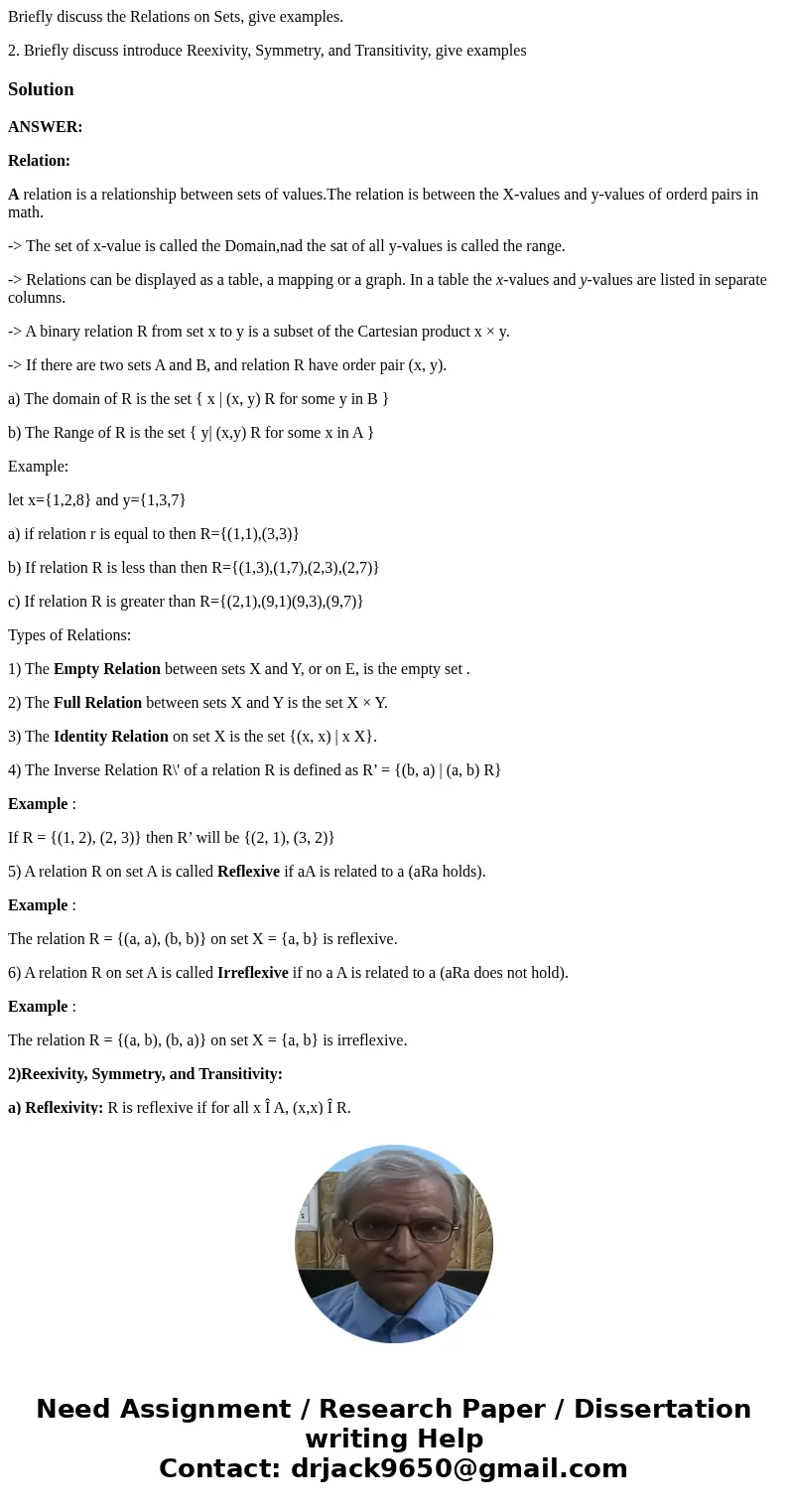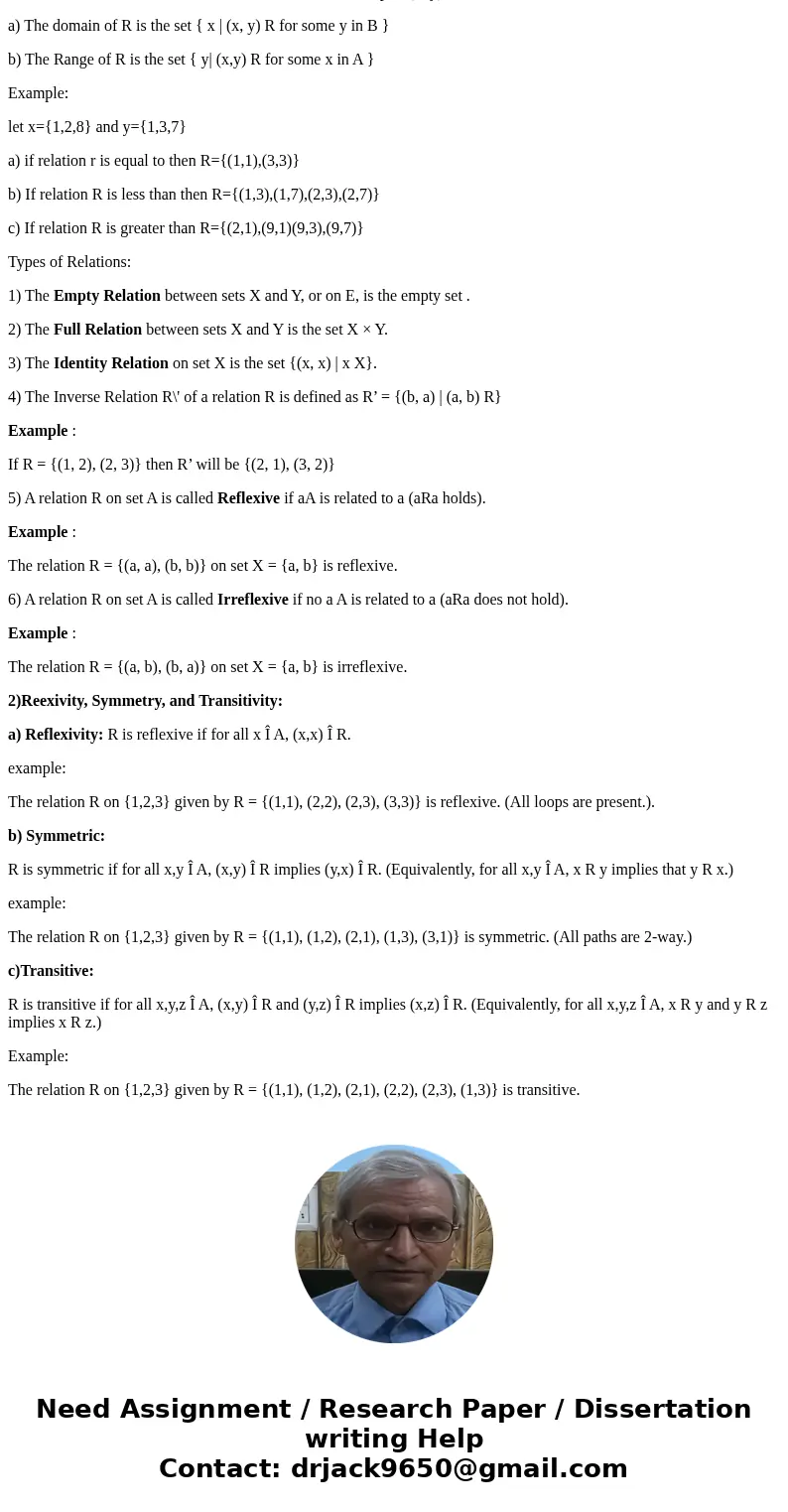Briefly discuss the Relations on Sets give examples 2 Briefl
Briefly discuss the Relations on Sets, give examples.
2. Briefly discuss introduce Reexivity, Symmetry, and Transitivity, give examples
Solution
ANSWER:
Relation:
A relation is a relationship between sets of values.The relation is between the X-values and y-values of orderd pairs in math.
-> The set of x-value is called the Domain,nad the sat of all y-values is called the range.
-> Relations can be displayed as a table, a mapping or a graph. In a table the x-values and y-values are listed in separate columns.
-> A binary relation R from set x to y is a subset of the Cartesian product x × y.
-> If there are two sets A and B, and relation R have order pair (x, y).
a) The domain of R is the set { x | (x, y) R for some y in B }
b) The Range of R is the set { y| (x,y) R for some x in A }
Example:
let x={1,2,8} and y={1,3,7}
a) if relation r is equal to then R={(1,1),(3,3)}
b) If relation R is less than then R={(1,3),(1,7),(2,3),(2,7)}
c) If relation R is greater than R={(2,1),(9,1)(9,3),(9,7)}
Types of Relations:
1) The Empty Relation between sets X and Y, or on E, is the empty set .
2) The Full Relation between sets X and Y is the set X × Y.
3) The Identity Relation on set X is the set {(x, x) | x X}.
4) The Inverse Relation R\' of a relation R is defined as R’ = {(b, a) | (a, b) R}
Example :
If R = {(1, 2), (2, 3)} then R’ will be {(2, 1), (3, 2)}
5) A relation R on set A is called Reflexive if aA is related to a (aRa holds).
Example :
The relation R = {(a, a), (b, b)} on set X = {a, b} is reflexive.
6) A relation R on set A is called Irreflexive if no a A is related to a (aRa does not hold).
Example :
The relation R = {(a, b), (b, a)} on set X = {a, b} is irreflexive.
2)Reexivity, Symmetry, and Transitivity:
a) Reflexivity: R is reflexive if for all x Î A, (x,x) Î R.
example:
The relation R on {1,2,3} given by R = {(1,1), (2,2), (2,3), (3,3)} is reflexive. (All loops are present.).
b) Symmetric:
R is symmetric if for all x,y Î A, (x,y) Î R implies (y,x) Î R. (Equivalently, for all x,y Î A, x R y implies that y R x.)
example:
The relation R on {1,2,3} given by R = {(1,1), (1,2), (2,1), (1,3), (3,1)} is symmetric. (All paths are 2-way.)
c)Transitive:
R is transitive if for all x,y,z Î A, (x,y) Î R and (y,z) Î R implies (x,z) Î R. (Equivalently, for all x,y,z Î A, x R y and y R z implies x R z.)
Example:
The relation R on {1,2,3} given by R = {(1,1), (1,2), (2,1), (2,2), (2,3), (1,3)} is transitive.


 Homework Sourse
Homework Sourse